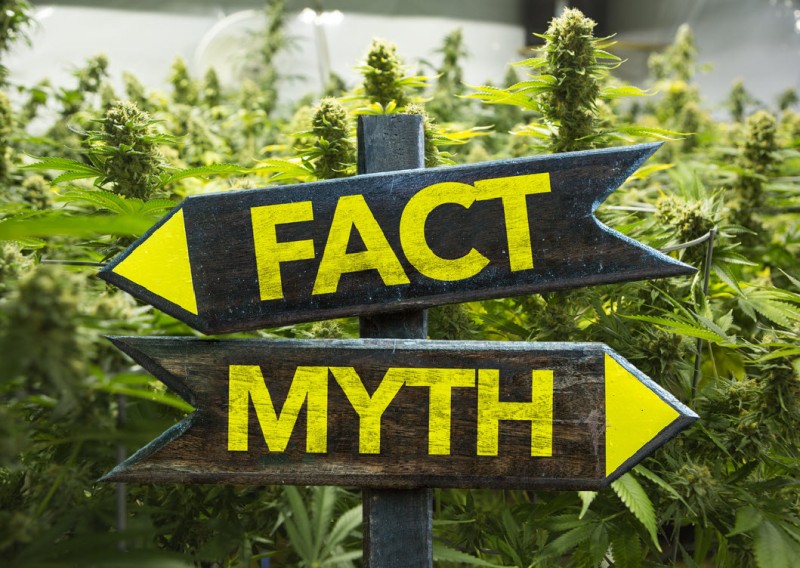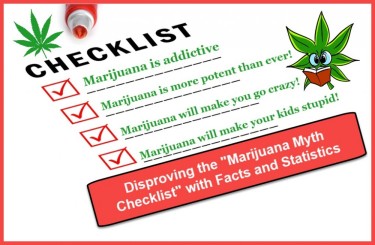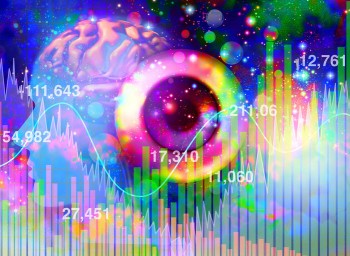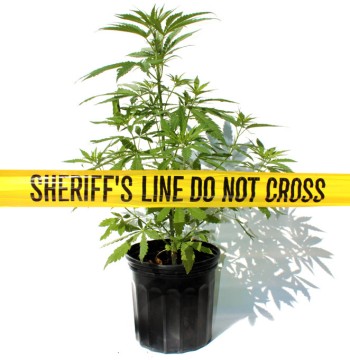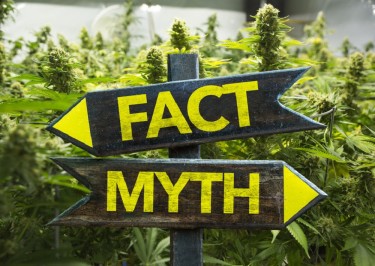
Cannabis isn’t lurking in the shadows anymore. It’s center stage—dispensary shelves, medical clinics, yoga studios, even grandma’s arthritis kit. The plant once villainized in reefer madness is now being embraced for its therapeutic promise, mood-enhancing effects, and frankly, just good old-fashioned relaxation.
But here’s the problem: while cannabis has evolved, a lot of the conversation around it hasn’t. Old-school myths still circulate, clouding judgment and fueling bad policy and worse decisions.
Time to clear the air. Let’s bust ten of the most persistent cannabis myths that are rooted in stigma and not science. We shall also see what the real data and decades of plant wisdom actually say.
Myth 1: Cannabis Like Other Drugs Always Leads to Addiction
The Claim: One puff and you’re doomed.
The Truth: Not so fast. Yes, cannabis can be habit-forming, but it’s nowhere near the league of opioids, alcohol, or nicotine.
Roughly 1 in 10 cannabis users may develop Cannabis Use Disorder (CUD), a condition that exists on a spectrum—ranging from mild (just a couple symptoms) to severe (with significant life disruptions).
While CUD is not something to shrug off, it mostly is not a consequence of casual occasional use. Risk increases with daily consumption, especially of high-THC products and starting young stacks the odds even higher.
Think of it like chocolate cake: perfectly enjoyable when you know your limits—but if you’re face-deep in frosting every day, something’s out of balance.
Myth 2 : All Cannabis Strains Feel the Same
The Claim: Bud is bud. It’s all the same high.
The Truth: That’s like saying every wine gets you drunk the same way. It may be technically true—but tell that to someone comparing a bold cabernet to a crisp sauvignon blanc.
Each cannabis strain has its own unique blend of cannabinoids and terpenes. Due to their unique cannabinoid and terpene compositions, one might make you feel uplifted and talkative while another could have you glued to the couch mid-sentence.
And don’t forget body chemistry. What lifts your friend into a creative flow state might send you to napville.
Myth 3: CBD and THC Are Basically the Same Thing
The Claim: It is all weed.
The Truth: CBD and THC are like siblings from the same family, but they have unique fingerprints.
These two cannabinoids vary due to their unique interactions with our bodies.
THC binds straight to CB1 receptors in the brain, flipping the switch on that classic cannabis high.
CBD, on the other hand, won’t get you high. In fact, research shows that it can tame some of THC’s more intense side effects, like paranoia or racing thoughts.
They work best in tandem for many cannabis users in a phenomenon called the entourage effect but they are not interchangeable.
4. Myth: Autoflowers Are Weak Sauce
The Claim: Autoflowering plants? Cute to grow but not the real deal.
The Truth: That joke's about a decade outdated.
Autoflowers got a bad rap early on—low potency, low yield—but the game has changed. Breeders have spent years fine-tuning genetics. Today’s top-shelf autoflowers rival photoperiod strains in THC content, flavor, and bag appeal.
Plus, they flower based on age, not light schedule. That means faster harvests and fewer headaches—especially for small-scale or stealth growers.
Think of them as the electric cars of the cannabis world: once doubted, now silently taking over.
5. Myth: Cannabis Has No Medical Value
The Claim: It’s not medicine—it’s just an excuse to get high.
The Truth: Research says otherwise.
Cannabis is legally prescribed for debilitating conditions that are distinctively defined from one legal zone to the next. You may also want to know that a drug containing CBD has been approved by the FDA for rare forms of epilepsy. Even the National Academies of Sciences acknowledges the therapeutic value.
This plant isn’t a miracle cure. But to say it has no medical benefit is willfully ignoring mountains of peer-reviewed evidence.
6. Myth: Legal = Harmless
The Claim: If it’s on the shelf at the dispensary, it must be safe.
The Truth: Regulation is not the same as invincibility.
Cannabis is getting more powerful by the day and too much THC can mess with your head, impair your driving, or trigger anxiety. Certain strains don’t play nice with everyone, especially those prone to mental health issues. And yes, it can interact with medications.
Legalization just means rules, testing, and accountability. But the plant still demands respect. Talk to your physician about it especially if you have a preexisting condition, start low, go slow, and know your strain.
7. Myth: Cannabis Kills Brain Cells
The Claim: You’ll be dumber every time you spark up.
The Truth: There is no scientific evidence yet.
There is no solid evidence yet that says cannabis use kills brain cells. But frequent heavy use, especially in teens, has been shown to have an impact on memory, attention, learning and other brain functions. The younger the user, the higher the risk.
8. Myth: Synthetic Cannabinoids = Regular Weed
The Claim: Sounds like budget bud.
The Truth: Real cannabinoids come from the cannabis plant and not from a lab
Substances such as K2/Spice are lab-made chemicals designed to mimic THC but with far more aggressive effects. They often cause hallucinations, seizures, or worse. They're sold in shady packaging, rarely tested and many are outright deadly.
Natural cannabis has over 100 cannabinoids working in harmony. Synthetics try to brute-force a high—with chaos as a side effect.
9. Myth: Cannabis Is a Gateway Drug
The Claim: Smoke weed today and you will certainly shoot heroin tomorrow.
The Truth: This myth has been used to justify decades of prohibition and it’s not conclusively backed by modern science.
What actually predicts drug abuse? Peers. Trauma. Socioeconomic status. Environment. In fact, cannabis is showing promise as an exit drug, especially for people trying to reduce opioid dependence or alcohol intake.
It’s not a gateway. It’s a door and how you walk through it matters.
10. Myth: Feminized Seeds Are Fake or Genetically Modified
The Claim: If it's feminized, it's GMO.
The Truth: Not even close. Feminized seeds are the result of selective, non-GMO breeding.
Feminized seeds have nothing to do with genetic modification of the cannabis plants. Instead, breeders use selective breeding techniques that achieve pollen used to fertilize female plants to produce a 99% female offspring.
Here is why this matters:
-
You don’t have to play guessing games with plant sex
-
There's no risk of rogue males pollinating your crop
-
Growers get more control, more flower, less hassle
Conclusion
Cannabis isn’t the devil’s lettuce anymore. It’s not a miracle cure-all either. What it is, is a chemically complex, incredibly adaptable plant with real therapeutic value, real limitations, and way too many myths still riding its coattails.
As legalization continues to spread and more people lean in with curiosity, it’s time to clear the air. So next time someone hits you with a myth that’s been passed around more than a blunt at a bonfire, don’t just pass it—correct it with scientific facts and experience.

